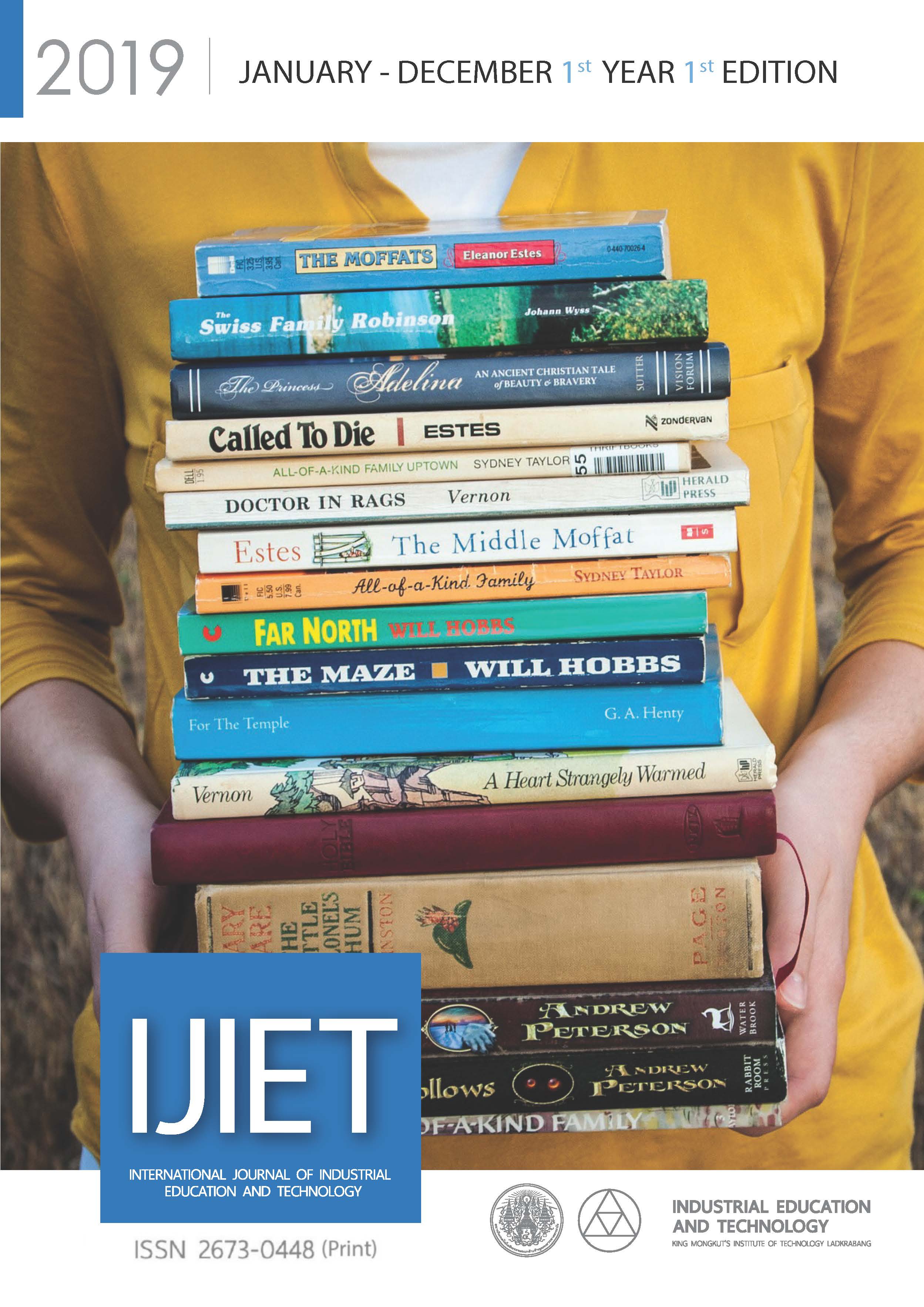Blended Learning Management of WordPress Website Development Skill for Communication Design Undergraduates Using The ADDIE Model
Keywords:
ADDIE Model, Blended Learning, WordPressAbstract
The purpose of this study was to identify a gap performance of website building skill for the undergraduates at the Department of Communication Design, Faculty of Architecture King Mongkut’s Institute of Technology Ladkrabang (KMITL). The researchers applied the ADDIE Model (Branch,2009), a theory of instructional design process that starts from the beginning to an end. It contains five phases: 1) Analysis 2) Design 3) Development 4) Implementation and 5) Evaluation. Enable us to notice what cause the performance gap and how we solve that problem via instructional design and meet assessment learning criteria. This learning management has the following objectives: 1) To develop the Blended Learning instructional plan for Website Development Skill on Communication Design Undergraduates using the ADDIE Model through the short-time workshop training to build Portfolio Website with WordPress. 2) Student can build their own portfolio websites. The overall outcome of the Blended Learning management with the learners’ satisfaction towards WordPress website training workshop, for the undergraduates according to ADDIE approach and Likert-Type scale (Likert,1932). It says 1. The learners are satisfied with Online Lesson at mean = 4.32, Instructor at mean = 4.56 and Facilitation at mean = 4.55. 2. The evaluation of the learners' portfolio websites that equal to rubric criteria at (0.00 - 3.00), which mean very good. The average score is 2.47
References
Adini, M & Santana Purba, H & Ati Sukmawati, R. (2017). Development of Blended Learning Model using wordpress. Vidya Karya. 32. 10.20527/jvk.v32i1.4156.
Aly, I. (2016). Comparison of students’ performance in a managerial accounting course taught in blended learning, traditional classroom, and online setting. Quarterly Review of Business Disciplines 2(4)
Andrasari, Y. (2016). Social Media and Social Change: self identity construction and self presentation in cybersociety. Researchgate.
Avila, J. (2016). Evaluation of the free, open source software WordPress as electronic portfolio system in undergraduate medical education. BMC Medical Education 16:157.
Branch, RM. (2009). Instructional Design: The ADDIE Approach. Springer 140, 1–55.
Curtis J. Bonk, Charles R. Graham , Jay Cross , Michael G. Moore. (2005) The Handbook of Blended Learning: Global Perspectives, Local Designs, Pfeiffer & Company.
Ghani M (2018) Adaptation of ADDIE Instructional Model in Developing Educational Website for Language Learning. GJAT, 8(2).
Hancock, M. E. (2017). The Use of WordPress in Online Focus Group Studies. The Qualitative Report, 22(8).
Hu, Chuan; Zhao, Li; and Huang, Jiao. (2014). Exploring Online Identity Re- Construction in
Social Network Communities: A Qualitative Study. PACIS 2014 Proceedings. 36.
Morton, CE, et al. (2016). Blended learning: how can we optimise undergraduate student engagement? BMC Medical Education, 16(1).
Pantaweesak, R. (2015). The Development of Web-Based Instruction Lesson on Website Development. The Institute for the Promotion of Teaching Science and Technology by WordPress. Journal of Industrial Education, 14(2), 125-131.
Patel SK, Rathod VR, Prajapati JB (2011) Performance Analysis of Content Management Systems- Joomla, Drupal and WordPress. International Journal of Computer Applications, 21(4)
Leekitchwatana, P. (2016). Research methods in education. Bangkok: Meen Service Supply.
Muruganantham, G. (2015). Developing of E-content package by using ADDIE model. International Journal of Applied Research, 1(3), 52-54
Ruth, C. (2013). Content Management Systems: Trends in Academic Libraries. Information Technology and Libraries: Valparaiso University,Valparaiso, IN.



